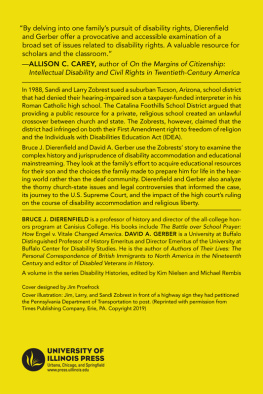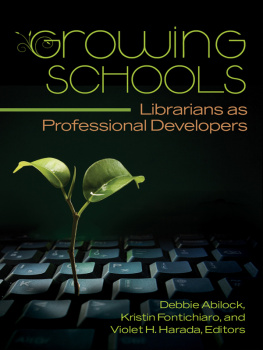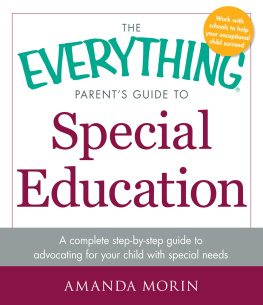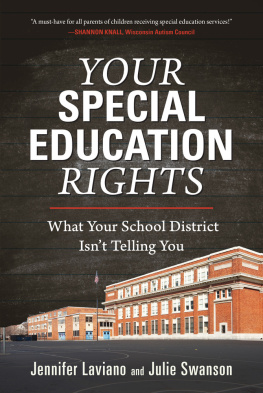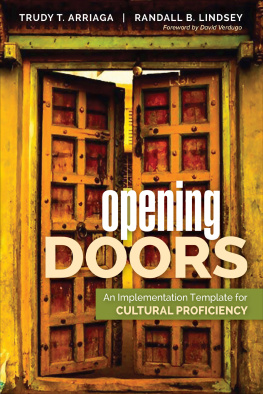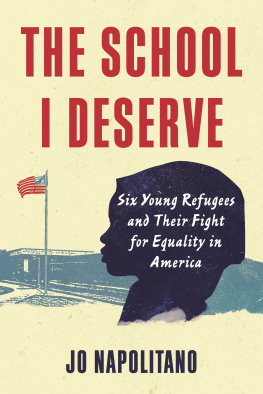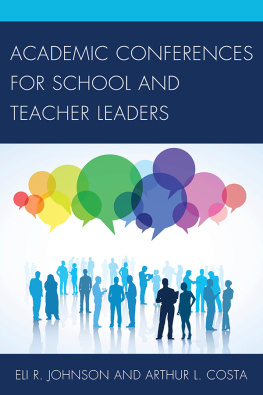Bruce J. Dierenfield - Disability Rights and Religious Liberty in Education: The Story behind Zobrest v. Catalina Foothills School District
Here you can read online Bruce J. Dierenfield - Disability Rights and Religious Liberty in Education: The Story behind Zobrest v. Catalina Foothills School District full text of the book (entire story) in english for free. Download pdf and epub, get meaning, cover and reviews about this ebook. year: 2020, publisher: University of Illinois Press, genre: Home and family. Description of the work, (preface) as well as reviews are available. Best literature library LitArk.com created for fans of good reading and offers a wide selection of genres:
Romance novel
Science fiction
Adventure
Detective
Science
History
Home and family
Prose
Art
Politics
Computer
Non-fiction
Religion
Business
Children
Humor
Choose a favorite category and find really read worthwhile books. Enjoy immersion in the world of imagination, feel the emotions of the characters or learn something new for yourself, make an fascinating discovery.
- Book:Disability Rights and Religious Liberty in Education: The Story behind Zobrest v. Catalina Foothills School District
- Author:
- Publisher:University of Illinois Press
- Genre:
- Year:2020
- Rating:4 / 5
- Favourites:Add to favourites
- Your mark:
Disability Rights and Religious Liberty in Education: The Story behind Zobrest v. Catalina Foothills School District: summary, description and annotation
We offer to read an annotation, description, summary or preface (depends on what the author of the book "Disability Rights and Religious Liberty in Education: The Story behind Zobrest v. Catalina Foothills School District" wrote himself). If you haven't found the necessary information about the book — write in the comments, we will try to find it.
In 1988, Sandi and Larry Zobrest sued a suburban Tucson, Arizona, school district that had denied their hearing-impaired son a taxpayer-funded interpreter in his Roman Catholic high school. The Catalina Foothills School District argued that providing a public resource for a private, religious school created an unlawful crossover between church and state. The Zobrests, however, claimed that the district had infringed on both their First Amendment right to freedom of religion and the Individuals with Disabilities Education Act (IDEA).
Bruce J. Dierenfield and David A. Gerber use the Zobrests story to examine the complex history and jurisprudence of disability accommodation and educational mainstreaming. They look at the familys effort to acquire educational resources for their son starting in early childhood and the choices the Zobrests made to prepare him for life in the hearing world rather than the deaf community. Dierenfield and Gerber also analyze the thorny church-state issues and legal controversies that informed the case, its journey to the U.S. Supreme Court, and the impact of the high courts ruling on the course of disability accommodation and religious liberty.
|CoverTitleContentsAcknowledgmentsIntroduction1. Parenting, Training, and Schooling: The Zobrests Encounter Deafness2. Into the Mainstream3. Mainstreaming in a Catholic School4. In Search of Religious Liberty5. Signing, Sectarian Schools, and the Law6. The AftermathAppendix 1. Federal Court Decisions Citing, Mentioning, or Examining Zobrest v. Catalina FoothillsAppendix 2. InterviewsNotesIndexBack Cover|
As a disability history, the book excels. . . . Disability Rights and Religious Liberty in Education achieves its goal of creating a comprehensive account of Zobrest that considers disability rights, history, and constitutional law. Journal of Church and State
The definitive history of the landmark US Supreme Court case Zobrest v. Catalina Foothills School District 1993 . . . This is a great volume for legal scholars, families of special needs children, and school administrators. . . . Highly recommended. Choice
An excellent job of telling the story of the Zobrests . . . Disability Rights and Religious Liberty in Education has so much to recommend it, both in its fascinating topic and its nuanced engagement with it. H-Net Reviews
|
Bruce J. Dierenfield is a professor of history and director of the all-college honors program at Canisius College. His books include the prize-winning The Battle over School Prayer: How Engel v. Vitale Changed America. David Gerber is a University at Buffalo Distinguished Professor of History Emeritus and Director Emeritus of the University at Buffalo Center for Disability Studies. He is the author of Authors of Their Lives: The Personal Correspondence of British Immigrants to North America in the Nineteenth Century and editor of Disabled Veterans in History.
Bruce J. Dierenfield: author's other books
Who wrote Disability Rights and Religious Liberty in Education: The Story behind Zobrest v. Catalina Foothills School District? Find out the surname, the name of the author of the book and a list of all author's works by series.

